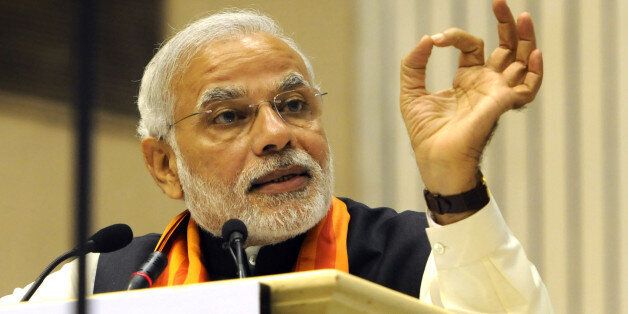
As a journalist and author who's covered international affairs for five decades, I have, of course, my favorite places and people. I also have my peeves. There are some countries that I'd rather not re-visit, although these are only a few -- and getting fewer as stubbornly anti-democratic regimes yield, however reluctantly, to benign forces.
India is among my favorite places, not the least because -- barring a some short years under Prime Minister Indira Gandhi -- it hasn't had an anti-democratic regime since independence from the British Raj in 1947.
Democracy, is, of course, messy and untidy; it is loud. Indians are predisposed to being argumentative: there's an old saw that all it takes is one Indian to start a jeremiad, two Indians to escalate it into a state of fierceness, and three Indians for everybody to go insane. With nearly a dozen official languages and hundreds of dialects, discussions among Indians -- at least the ones in public -- tend to quickly segue into shouting matches.
Everybody accepts that in such matches there will be liabilities, there will be villains and victors. Everybody accepts that it's cultural. Everybody accepts that even though nobody may hear a thing if everyone shouts, at least it's cathartic.
I, too, accept, all this, even though I'm no longer an Indian national (and, uncharacteristically for an Indian, I'm really not all that argumentative). I was born in what was then Bombay and is now Mumbai; I was born in a year when the country's population was a third of the current figure of 1.3 billion. (No, I'm not specifying my age, but you can do the arithmetic: Demographers say that a country's population doubles every 35 years.) I left India to study in the United States, and never came back to live in Mumbai again.
I do return every few weeks, however, for my books and columns. I am based in Dubai, which has become a kind of body-and-mind repair shop for me. It takes only three or four hours to fly from here to most Indian cities; on the flight over, India elicits a strange and exciting sort of anticipation. On the flight back to Dubai, I inevitably reflect on the galloping changes that seem to take place in between my visits.
The most significant change, in my view, is that there's a renewed national energy about India's future. People still complain about inflation, high unemployment figures, and corruption in high places. But the same people will tell you that their hopes for a better future for themselves and their children are on the rise.
Professional economists are less sanguine, driven as they are by statistics that can be manipulated to drive home any point one might choose. Naysaying gets you on the myriad TV talk shows where tirades and tantrums are commonplace; boosting India often brings boos.
My vote, metaphorically speaking, is with the everyday Indians I get to meet, with those who invest in creating more jobs and in developing India's infrastructure.
What explains my sense of hope rising? The answer doesn't lie in the stats, for sure: India's annual economic growth rate is projected to only crawl next year and the year beyond. My sense flows from the language and the body language of those whom I meet.
This may not be a terribly scientific observation; it's intuitive.
And why is this hope among people rising? Much as I felt diffident about Narendra Modi as a national leader when he was campaigning earlier this year, his pronouncements and projects since he became prime minister in May have reassured me.
Seven months in office isn't sufficient time to jumpstart the economy, to be sure. But if you carefully study what Mr. Modi has been saying about economic development and social justice, it becomes clear that considerable thought has gone into his statements.
Those statements contain a singular message, one that engenders hope in very many people who must deal with the daily drama of living in India: India is a country with vast natural resources, vast pools of educated and talented men and women, vast possibilities for widening manufacturing and strengthening agro-business, vast prospects for being a banker and a backroom-operations center for more industrialized countries.
Mr. Modi is not promising overnight change; he knows that India is too big and too diverse a country for that. But he's showing with great clarity what the future might look like, and what he says is entirely believable.
That's why, after a long time spent in the wilderness of despair, I -- like many Indians -- am cheering again.
This blog post is part of a series produced by The Huffington Post in conjunction with the launch of HuffPost India (December 8, 2014). To read all posts in the series, visit here.
